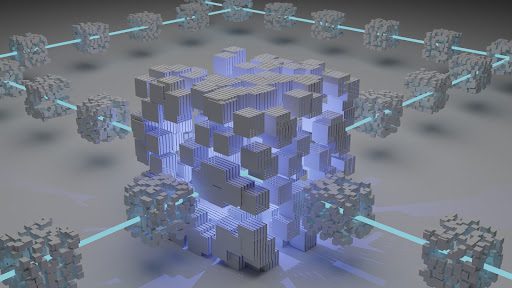Do you still need to get a single idea about blockchain technology?
Well, it is a systematic database of stored electronic information shared among the nodes of computers on the chain. Its crucial role is prominent in maintaining the security and decentralised transactions such as in Bitcoin cryptocurrency.
Blockchains can sustain the fidelity and security of recorded data, promoting trust among the participants in the same channel. Indeed, this highly innovative technology brings a promising future, especially to the business sectors.
But what is blockchain technology at a deeper level? Let’s dig into it by focusing on its usage.
Table of Contents
Typical Database vs Blockchain
Blockchain, as a database, is filled with structured data collected in groups known as blocks. Each block has a specific storage limit. Once it becomes full, it is closed and linked to the previous block. Then, another block is open for a new set of recorded transactions. Besides the structured data, the arrangement of blocks on the chain is in chronological order, as it doesn’t remove any information or blocks. This chain of data is blockchain.
In a typical database, data is structured into tables, while in the blockchain, they are chunks of data compiled together (blocks) and their timelines are irreversible. Each block is assigned a specific timestamp when linked to the chain, and no single person or group has control. Instead, all users on the chain collectively manage the ledger.
The Use of Blockchain Technology
The primary use of blockchain is to create records of digital data structures to be replicated and distributed, but not edited. Nobody can alter, delete, or destroy the files making it an immutable ledger. That’s why blockchain is also called distributed ledger technology (DLT).
How Does It Work?
Blockchain was a proposed research project in 1991. Its first actual implementation was on Bitcoin in 2009. Until then, many business owners worldwide adopted blockchain technology, which brought upturns in many operations. This advancement is yet deemed young but has the potential to become a revolutionary business tool shortly. How will it happen? Let’s look at its leading technologies that work together in the background.
Cryptographic Keys
There are two keys in the blockchain, the private and public keys, also called digital signatures in cryptocurrency. Each participant on the chain has these two keys for authorising and controlling transactions.
The authorisation of the deal is marked by a digital mathematical verification that guarantees the highest security in the transaction.
Peer-to-peer Network
A shared ledger or decentralisation system represents it. It allows any network partner to make transactions without a mediator or administrator.
Peers are nodes of computers that carry out the same tasks with the same power in the network. It implies that each computer holds a copy of the ledger by a consensus algorithm without hierarchic nature but of the reciprocity principle.
The Uses
In these recent years, blockchain technology has been known to be a game-changing tool. You’ll be surprised by how its mounting helpful attributes are using it.
Below are some features that make blockchain technology a groundbreaking advancement.
Copyright and Royalty Protection
The seemingly unlimited access to the Internet created a world for content creators from various interests and fields. While it paves the way for more opportunities to showcase their skills and talents, the need for copyright and ownership protection is immense. Blockchain technology has made fair share privileges for their works. They are duly paid or given an equal share of revenue as they are provided with real-time and transparent data on purchase transactions.
Digital Voting
Suppose the election process has been tagged with fraudulent activities or deceptive elements. In that case, blockchain offers a digital voting system in which the regulators can monitor everything without worries about any possibility of manipulation or alteration of voting figures. Also, it gives complete assurance that all votes cast are counted.
Legal Transactions
The use of paper trails can cause confusion. Sometimes, legal transactions are shaded, such as buying fundamental properties or transfer of ownership, when handled by literal paper documentation. Blockchain eliminated this by storing the titles on the network and providing a crystal clear viewing of the entire transaction.
Taxation Issues
Any entity or company can openly declare its financial statement and demonstrate to lawmakers its strict compliance with local ordinances and state or federal laws. Sales record is immutably stored for the IRS, which can convey a fair share of tax obligations.
Employees Rights Protection
Blockchain enforces the use of smart contracts, which bolsters workers’ rights across countries. It has the potential to have more improved labour policies that can reduce forced labour issues.
Weapon Ownership Tracking
Perhaps, this is a hot-button issue because gun control and ownership tracking have been a burden for the concerned agencies.
With blockchain technology, these are resolved. Also, the record of selling or negotiations conducted privately is accessible.
Conclusion
From vision to reality, blockchain has become integral to our economy, safety, and advancement. While it is popularly used in monetary issues due to banking errors and unreasonable charges on transactions, including the dragging time frame of processing, many sectors and industries are taking advantage of its features.

